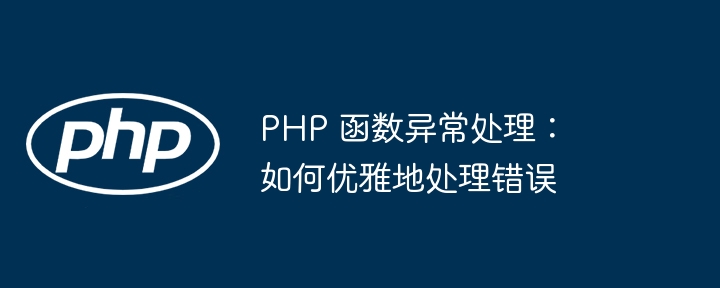
PHP exception handling provides an elegant error handling mechanism by throwing exceptions and using try/catch statements: Throwing Exceptions: Raising exceptions to be handled in the code. Use try/catch statements: catch and handle exceptions. Custom Exceptions: Create custom exception classes to catch specific errors. Advantages: centralized error handling, improved code readability, and enhanced maintainability.

In PHP, exception handling is a way to handle errors and exceptions gracefully. It provides a centralized and manageable handling mechanism for errors, thereby improving code readability and maintainability.
PHP provides three main methods to handle errors:
Use try and catch statements to handle exceptions:
try {
// 代码可能会抛出异常
} catch (Exception $e) {
// 捕获并处理异常
}Specific types of errors can be caught by creating a custom exception class:
class MyException extends Exception {
// 类内容
}Consider the following code using the function file_get_contents() :
$contents = file_get_contents('data.txt');If the file does not exist, this function will throw a FileNotFoundException exception. This exception can be caught and handled gracefully by using the try and catch statements:
try {
$contents = file_get_contents('data.txt');
} catch (FileNotFoundException $e) {
// 处理文件不存在的异常
}Exception handling has the following advantages:
The above is the detailed content of PHP function exception handling: how to handle errors gracefully. For more information, please follow other related articles on the PHP Chinese website!